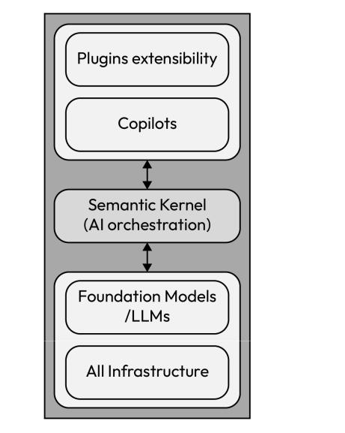However, now let’s take a step back and understand why we want to use SK and do such things as create natural language interfaces, chatbots, or natural language programming systems in the first place. Consider LLMs as the engine powering generative AI applications, and SKs act as the assembly line, integrating various generative AI services. For software developers, the reusability of code—be it functions or snippets—is crucial to streamline development processes. Furthermore, for expansive organizational applications, the efficient management of prompts, completions, and other agent-specific data is not just an operational preference but a fundamental business necessity. SK emerges as a pivotal framework, enabling the construction of durable and comprehensive generative AI applications by seamlessly integrating these essential facets.
Important note
For LLMs, the engine alone is not able to meet these business requirements any more than an engine without oil, gasoline, or electricity is able to meet a driver’s requirements of providing transportation. You need additional software code to provide a solution, not just the LLMs, and generative AI programming frameworks, such as SK, allow you to accomplish this. You are building around the engine to provide transportation, and you are building around LLMs to provide a generative AI solution.
For a real-world example, let’s use the company Microsoft. As mentioned earlier, Microsoft itself has embraced the SK framework across its organization, exemplifying its wide applicability and effectiveness. This integration is particularly evident in their next-generation AI-integrated offerings, called
“Copilots.” These Copilots harness the capabilities of LLMs, alongside your data and other Microsoft applications, including the Microsoft 365 suite (Word, Excel, and more). All of these components are seamlessly integrated using the SK framework, showcasing a sophisticated and powerful example of AI-enhanced productivity tools.
Additionally, later in this chapter, we’ll show an actual use case of how a Fortune 500 company transformed their development team and, thus, their applications into state-of-the-art, modern, generative AI-ready applications and solutions using SK.
If you would like to see more details on SK, you can visit the following link: microsoft/semantic-kernel: Integrate cutting-edge LLM technology quickly and easily into your apps (github.com), https:// github.com/microsoft/semantic-kernel.
Figure 6.3 provides a high-level visual description demonstration of the role of SK as an AI orchestrator between LLMs, AI infrastructure, copilots, and plugins in the Microsoft Copilot system:

Figure 6.3 – Role of SK as an AI orchestrator in Microsoft Copilot system